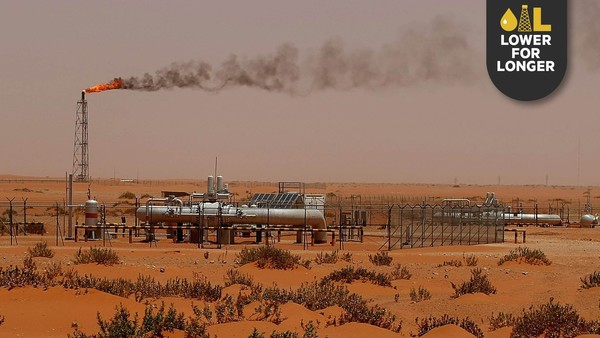©Getty Saudi Arabia lost market share in more than half of the most important countries it sold crude to in the past three years, even as the kingdom increased output to record levels. The world’s biggest oil exporter lost ground to rivals in nine out of 15 top markets between 2013 and 2015, including China, South Africa and the US, according to an analysis of customs data. Saudi Arabia set itself a goal in late 2014 of maintaining its crude market share amid a glut that prompted a collapse in oil prices, but the imports data compiled by FGE, an energy consultancy, suggest the country’s strategy suffered setbacks in some of its key customer countries last year. Other data show that Saudi Arabia achieved a limited increase in global market share in 2015 compared to 2014, although last year’s figure was lower than that recorded in 2013. “Saudi Arabia has had a very difficult time selling oil in this environment,” says Ed Morse, an analyst at Citigroup. “Its rivals are going into a very crowded market in a very aggressive way.” Oil producers including Russia and Iraq are putting pressure on Saudi Arabia in markets it regards as strategically important trading partners. Saudi Arabia signalled a shift in its market share strategy last month by reaching a provisional agreement with Russia and some other producers to cap output at January levels. This deal partly reflects the damaging impact of falling oil prices on producer economies, including Saudi Arabia. Brent crude, the international oil benchmark which plunged to a 13-year low of less than $30 a barrel in January, has dropped from a peak of $115 in mid-2014 to $40.71 on Monday. Brent started falling in the second half of 2014 due to swelling global oil supplies led by the US shale boom. It then plunged after the Saudi oil minister Ali al-Naimi led a landmark decision by Opec, the producers’ cartel, in November 2014 not to cut crude output to support prices. Saudi Aramco, the state-controlled energy company that is implementing the oil ministry’s strategy, has raised production to more than 10m barrels a day since the Opec meeting. Saudi exports have held above 7m b/d. Since late 2014, Saudi officials have repeatedly made the case for maintaining crude market share and sacrificing short-term oil revenue, saying the kingdom would not subsidise higher cost rivals, including US shale operators, by reducing production. But FGE’s data shows Saudi Arabia’s share of total Chinese oil imports fell from more than 19 per cent in 2013 to almost 15 per cent in 2015, because of increased supplies from Russia. Saudi Arabia’s share of South African imports dropped sharply during this period, from almost 53 per cent to 22 per cent, as Nigeria and Angola increased their shipments. Meanwhile, the US shale oil boom reduced the country’s need to buy crude from overseas. Saudi Arabia’s share of US imports fell from 17 per cent to almost 14 per cent between 2013 and 2015. Over the three years Saudi Arabia also lost ground in South Korea, Thailand, Taiwan and several western European countries. Saudi Arabia remains the largest oil supplier to many countries including China, however, and it secured crude market share gains in Brazil, India and Japan between 2013 and 2015. The FGE data also show that Saudi Arabia’s average market share loss across the 15 core countries slowed in 2015 compared to the previous year. But it did not fully halt the slide. Saudi Aramco did not respond to requests for comment about FGE’s data. Saudi Arabia increased its global market share marginally last year, according to calculations based on figures from Jodi, an oil database backed by Opec, and the International Energy Agency, an energy statistics body. Saudi crude exports represented 8.1 per cent of global oil demand — excluding the kingdom’s own needs — in 2015, compared to 7.9 per cent in 2014. The equivalent figure for 2013 was 8.5 per cent. The intensity of the battle over market share is highlighted by how Saudi Arabia is now confronting Russia in its own backyard. The kingdom has increased its focus on Europe by striking supply deals with traditional buyers of Russian oil, such as Preem, the Swedish refiner, and PKN Orlen and Lotos, Polish counterparts. “It’s basic economics,” says one Saudi Aramco insider. “There is a lot of crude out there. The Russians and Iraqis are going after new markets, and of course the Iranians [after the lifting of international sanctions] will try to regain their old buyers. We are [also] looking to make the most of this environment.” Jodi data show that Saudi Arabia’s crude exports rose to a 10-month high of 7.8m b/d in January. But given the kingdom’s growing domestic crude usage of about 3m b/d and production limitations, some industry insiders question the country’s capability to increase exports further to curb market share losses. Other analysts say Saudi Arabia is playing a long game. Saudi Aramco is using its financial muscle to buy more stakes in overseas refineries to lock in crude sales. The company — which this month announced plans to take full ownership of a Texas refinery, the largest in North America — is looking for more facilities in China, where it already has a presence, as well as India, Indonesia, Malaysia and Vietnam. “This is the future Saudi export strategy,” says Jim Krane, a fellow at Rice University’s Baker Institute for Public Policy. “Create captive markets in important importing countries by owning refineries in those countries. That way their market share is secured.” This initiative also highlights how Saudi Aramco is seeking a more balanced business model. The company is prioritising output of higher margin refined products such as diesel — exports of these fuels grew rapidly to more than 1m b/d last year. Saudi Aramco has ambitious plans to almost double its refining capacity to 10m b/d, which would be more in line with its production capabilities. “We have to be more









